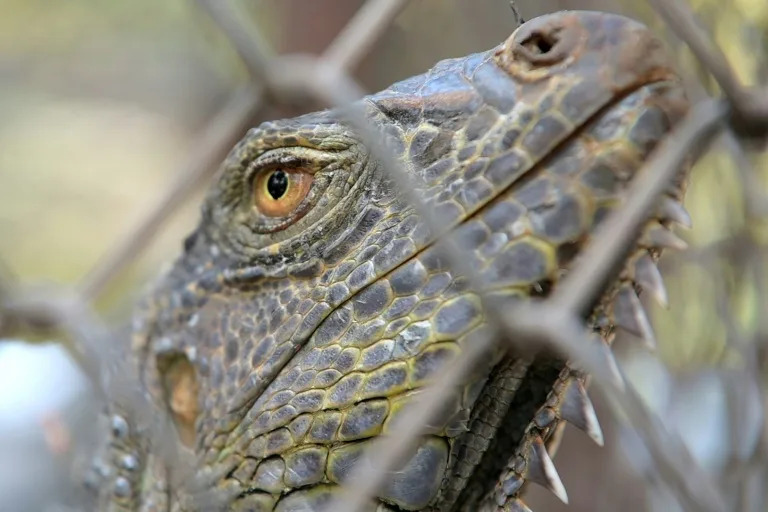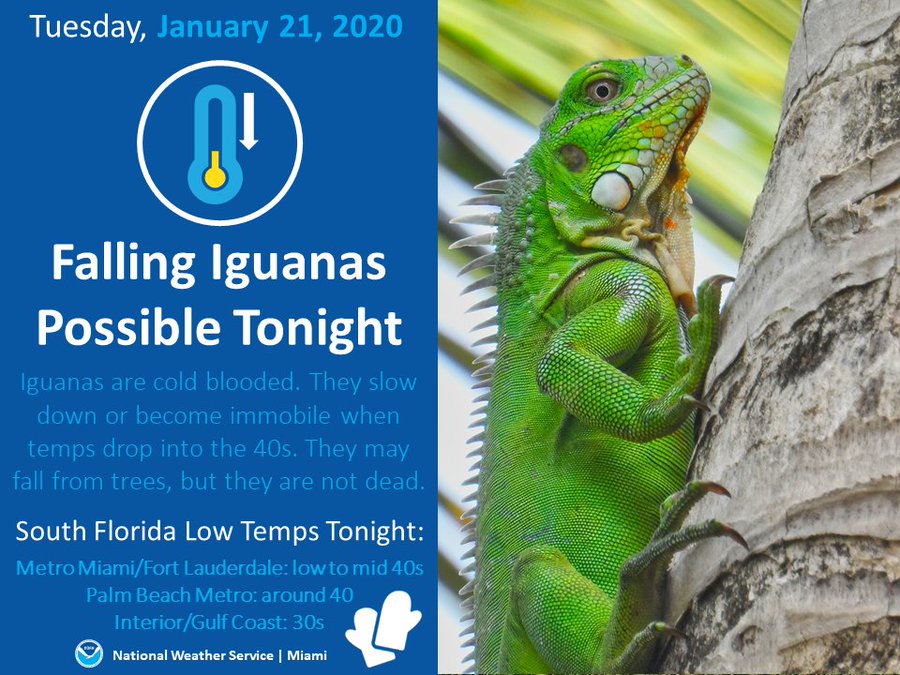AFP
Tue, 21 November 2023

Thailand's Department of National Parks, Wildlife and Plant Conservation said 134 iguanas had been captured in Lopburi alone (Handout)
Thailand has captured more than 150 rogue iguanas that were rampaging through the countryside, raiding farms and damaging the local environment, officials said.
The lizards are not native to the kingdom, hailing originally from Central and South America, but are increasingly popular as pets in Thailand.
Environmental concerns have been raised over the activities of the herbivorous lacertilians, which are thought to be pets that have either escaped or been deliberately released into the wild.
The Department of National Parks, Wildlife and Plant Conservation (DNP) said Tuesday that 134 iguanas had been captured in Pattana Nikom district, Lopburi, around 160 kilometres (100 miles) north of Bangkok.
A further six were discovered in Udon Thani, in the country's northeast, and 23 more elsewhere in Thailand.
"Many iguanas have been living in the wild in Lopburi province and destroying farmers' agricultural produce," a DNP statement said.
"The rapidly increasing number has affected the environment and ecology systems, causing problems to local people."
The cold-blooded captives -- which can grow to more than 1.5 metres (five feet) long -- will be kept at wildlife centres including one in Nakhon Nayok, northeast of Bangkok.
The department also said around 260 people across 61 provinces have informed officials that they own iguanas -- more than 3,600 lizards in total.
Earlier in the week, officials banned the import of the scaly creatures over environmental concerns.
Authorities said violators will face a maximum of 10 years in jail and a fine of up to one million baht.
tp-rbu/pdw/cwl
Tue, November 21, 2023
The fate of more than 250 rabbits, guinea pigs and rats remains unknown more than three months after they were sent to a humane society in Arizona.
When the San Diego Humane Society in California shipped more than 300 rabbits, guinea pigs and rats to the Humane Society of Southern Arizona in Tucson over the summer, it believed that they would be adopted as pets.
But most of the animals may have met a grislier fate, which has led to outrage, anguish and a police investigation.
According to officials at both humane societies, the 323 animals arrived in Tucson on Aug. 7 but were not taken into the shelter there.
Sign up for The Morning newsletter from the New York Times
Instead, the Humane Society of Southern Arizona transferred the animals to a man named Colten Jones, who runs a business in the Phoenix area called the Fertile Turtle, which sells live and frozen animals for reptile feed, both humane societies said in a joint statement.
Officials at both humane societies said they were investigating who arranged the transfer and what, exactly, had happened to the animals. Police said they were also investigating the case as a “possible fraud” but that no one had been charged.
But a piece of possible evidence about the fate of the animals emerged this month when a Tucson news station, KVOA, reported on a text message Jones sent Aug. 8, a day after the animals arrived in Tucson.
“Do you have the ability to freeze off a bunch of guinea pigs and or rabbits?” Jones wrote to another man, who did not want to be publicly identified, KVOA reported. “I don’t have the manpower or labor to be able to do it in time for the show and it’s too much time for me.”
The show apparently referred to an upcoming reptile show in Pomona, California, according to KVOA.
Jones did not respond to phone and text messages seeking comment.
The Southern Arizona and San Diego humane societies said in their joint statement that they were outraged by “this latest piece of information that clearly indicates Mr. Jones’ intention to use these animals as feed instead of finding them adoptive homes.”
Gary Weitzman, the president and CEO of the San Diego Humane Society, called it “the most horrible text I’ve ever seen in my life.”
“It’s just the most unthinkable outcome,” he said, adding that if he had known the animals could have been turned into reptile food, he would never have agreed to ship them to Arizona.
“Nothing like this in my 30 years of animal welfare has happened before,” he said. “It’s just horrifying.”
He said the San Diego Humane Society was exploring a lawsuit and had hired a private investigator.
“We’ve asked him to do a broad sweep,” Weitzman said. “What was the motivation here?”
Robert Garcia, the chair of the board of the Humane Society of Southern Arizona, said his group had also hired an independent investigator and was considering legal action against Jones and unnamed former employees “who may have been involved.”
In October, the group said that it had fired its CEO, Steve Farley, a former Arizona state lawmaker, and that its chief operating officer, Christian Gonzalez, had resigned. Both had “overseen” the transfer of the animals, Garcia said.
“The board determined that there was terrible negligence on the part of former leadership to properly vet where these animals were going and to ensure that, wherever they were going, they would be adopted out as pets,” Garcia said.
Farley did not respond to requests for comment. He told The Associated Press in a statement last month that he had no direct involvement in the transportation or placement of the animals and that “subsequent allegations have been very disturbing to me.”
Gonzalez did not respond to requests for comment.
Garcia said the Humane Society of Southern Arizona was contending with “betrayal and also heartbreak.”
Concerns about the animals began to emerge soon after they arrived in Tucson, and local animal welfare activists began to ask about their health and well-being, Garcia said.
As concerns about the animals mounted, Jones’ brother, Trevor Jones, who had helped the Humane Society of Southern Arizona with some previous animal adoptions, returned 64 of them to the society on Sept. 2, Garcia said. But the remaining 259 have not been recovered, he said.
“We have to assume the animals were used as feed,” Garcia said.
Trevor Jones did not respond to phone messages seeking comment Monday.
The Human Society of Southern Arizona, Garcia said, has hired a new CEO.
“It is very important for the Humane Society to continue on with its mission,” Garcia said, “and we ask for patience as we work to rebuild that trust.”
Weitzman said that people who worked in animal welfare were angry and upset to think that the animals might have been turned into food for reptiles.
“We just want the truth and accountability,” he said. “We’re not looking for anything else.”
c.2023 The New York Times Company




